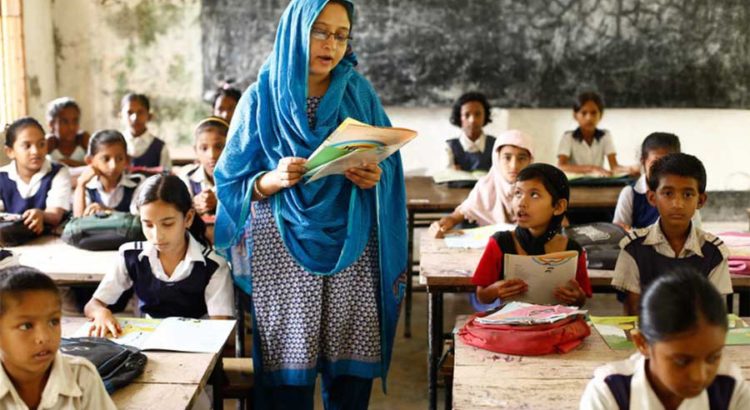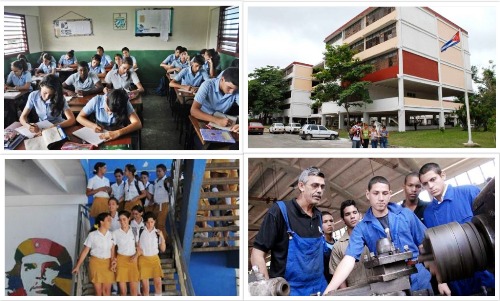Education that spurs creativity in children
Children are born to be creative, like eagles are born to soar, see the world, and find food, not scratch and fight for scraps in a coop. Instead of competing against each other on memorisation tests, when children utilise their creativity to its full potential, creativity can contribute to healthy lives and future careers.
Creative thinking skills can be considered as one of the key competencies for the 21st-century, and its effects are widespread. It allows us to fly to the moon, create art, develop computers, and cure illness. Creativity has not only been recognised in the sciences and the arts but has also been shown to play an important role in everyday problem-solving.
However, creativity is neither valued nor incentivised in most of our schools in Bangladesh or the educational system; instead, rote learning is highly rewarded. This tempts students to memorise rather than understand the concepts in a desperate attempt to produce results in the face of cut-throat competition.
Because of the incentives or sanctions on schools and teachers based on students’ test scores, schools have turned to rote lecturing to teach all tested material and spent time teaching specific test-taking skills. Students memorise information without opportunities for applications. This approach stifles natural curiosities, the joy of learning, and exploring that might lead to their passions.
Making the test scores the measure of success fosters students’ competition and narrows their goals, such as getting rich while decreasing their empathy and compassion for those in need. However, the greatest innovators in history were inspired by big visions such as changing the world. Their big visions helped their minds transcend the concrete constraints or limitations and recognize patterns or relationships among the unrelated.
On top of it, as the teachers have been compelled to depend on rote lecturing, students get few opportunities for group work or discussions to learn and collaborate with others.
Most schools in Bangladesh are so focused on tests and textbook lessons that it has reduced children’s playtime which has the potential to stifle imagination. With pressure to cover large amounts of material, schools and teachers often overfeed students with information leaving the students little time to think or explore the concept in depth.
Most education system in Bangladesh has increasingly fostered conformity, clipping eagles’ wings of individuality. It has stifled uniqueness and originality in both educators and students. Wing-clipped eagles cannot do what they were born to do – fly; individuality-clipped children cannot do what they were born to do – fulfil their creative potential.
Hence, schools in Bangladesh must develop or incorporate a curriculum that can nurture creativity and prepare young students for the challenging world.
In recent years, few curricula around the world have received global recognition for their effective way of helping the students to develop and build a better world through creativity, intercultural understanding, and respect. Some of these curricula are International Baccalaureate (IB), Cambridge Assessment International Education, and many more.
IB believes that every person has the ability and the right to be creative. By providing the students with the tools to encourage creative thought and creative behaviours, IB programmes help students to develop creativity and in turn, to foster a commitment to be a lifelong learner. Creativity is the key element of all four IB programmes. In the Primary Years Programme (PYP), students are driven by their inquiry and creativity to develop understandings within their learning. A supportive teacher will encourage the learning process and acknowledged the play process to experiment creatively, towards developing understandings. PYP is mainly inquiry-based, which allows the learners to want to learn. The learners become responsible for their own learning. Thus, it’s not ‘what my teachers or parents want me to do’, it’s what ‘I want to do.’ PYP does not have traditional textbooks.
The children learn from the questions based on a central idea that has been given to them. For example, if the students are learning about machines, then they are taught how machines can make their lives easier. Afterwards, the children learn through the questions they have or other children have. Most of the times, the children are given open-ended tasks which helps them to develop teamwork, research, enhance their thought process, and mainly encourage them to learn.
On top of it, students explore six trans-disciplinary themes of global significance: who we are, where we are in place and time, how we express ourselves, how the world works, how we organise ourselves and share the planet.
In all IB programmes, a strong emphasis is placed on students finding their information and constructing their understanding. Concepts are explored to both deepen disciplinary understanding and to help students make connections and transfer learning to new contexts. Teaching uses real-life contexts and examples, and students are encouraged to process new information by connecting it to their own experiences and the world around them. The teaching of IB is focused on effective teamwork and collaboration. This includes promoting teamwork and collaboration between students but also refers to collaborative relationships between teachers and students.
The teaching is inclusive and values diversity. It affirms students’ identities and aims to create learning opportunities that enable every student to develop and pursue appropriate personal goals. On top of it, assessment plays a crucial role in supporting as well as measuring and learning. This approach also recognizes the crucial role of providing students with effective feedback.
One of the most special features of the IB is that it gathers together a worldwide community of educators who share a common belief that education can help build a better world. Today, as new global challenges emerge under an unprecedented pace of change, curriculum like this is more relevant and necessary than ever.
Changes do not happen overnight; however, some schools in Bangladesh may take initiatives of changing its curricula, either by incorporating one of the existing curricula like IB or create their own. Whichever is it, all eagles deserve to soar high in the sky and see the world. Schools should let the children utilise their creativity to its full potential and not burden them with tests, grades, and memorisation. Only then these learners will be able to become knowledgeable, caring, empathetic, creative and critical thinkers who will create a better and peaceful country and world.
The writer is Head of K-12 Bengali Department, International School Dhaka
syeda.razia@isdbd.org
Fuente de la Información: https://thefinancialexpress.com.bd/views/education-that-spurs-creativity-in-children-1587915005









 Users Today : 4
Users Today : 4 Total Users : 35460021
Total Users : 35460021 Views Today : 8
Views Today : 8 Total views : 3418639
Total views : 3418639